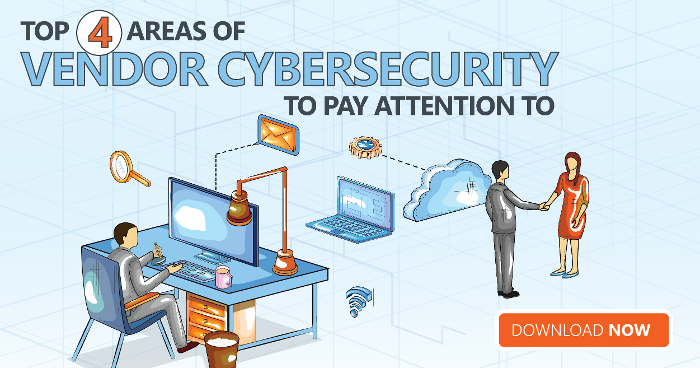With the explosive growth of outsourced technology services and the increase of third-party data breaches, it’s vital organizations take control of their third-party relationships and implement the necessary steps to properly manage and map their third-party cyber risks.
Strategies to Manage Third-Party Cyber Risks
When it comes to managing your third-party cyber risks, it’s best to look at the approach in two segments: assessment and implementation.
- Assessment
First is assessing third-party cyber risks. Here are two go-to assessment strategies for safeguarding third-party data risks:
-
- Stratify third-party vendors. It’s best to assess risk based on attributes, such as volume of transactions, data sensitivity type and where the data may be stored.
- Create an inventory. This should include all the third-party vendors that are used by your organization. Once an inventory of all third parties is completed, a third-party vendor management questionnaire can be used to determine an appropriate risk-level for that third-party vendor. If you’re a large organization that works with hundreds of vendors, an investment in a third-party risk management software that evaluates third-party risk and monitors third-party vendors will help streamline your third-party risk program.
- Implementation
Next is implementation of both industry standards and regulatory implementation to help with managing third-party cyber risks.
Every industry will have industry standards your organization should be familiar with, such as HIPAA, PCI/DSS and GLBA, to name a few. Each organization should check the guidelines that are particular to your industry. One very important regulatory must-have is making sure incident breach notification requirements are defined between your organization and third parties that meet industry notification requirements.
If your organization isn't in a regulated industry, it’s still important to follow industry best practices on how to manage information security risks to ensure your organization is following the best guidance available.
Mapping Third-Party Cyber Risks
When it comes to mapping your data flow, prioritizing mechanisms for tracking data easily in both digital and physical formats, all the way from data record creation to disposal, is important.
Data mapping consists of assigning data custodians, implementing system controls and creating data handling procedures and regular auditing.
Two other important mapping components include stress testing and cross-checking with an organization’s incident response (otherwise known as a playbook). A stress test is a realistic, scenario-based testing of an organization’s cyber incident playbook. It’s a high-impact way of engaging your organization’s response team from the executive leadership level, down to various support teams.
4 stress test and cyber incident playbook tips:
- Stress test regularly. Regular testing will help everyone be familiar with their roles during an incident and properly react to that incident. A stress test should be completed at least annually.
- Outline your testing goals. Stress testing should teach and test your employees on their roles during an incident. Know your goal of the test and act on the findings of the test through a lessons learned meeting.
- Assign accountability. A cyber incident playbook is created so an organization has a plan for responding to and managing cyber incidents. In the playbook, assign accountability for communicating with the media and stakeholders.
- Ensure the appropriate teams are included. The importance of a cyber incident playbook is to provide all employees of an organization with a clear understanding of their responsibilities before, during and after a cyber incident. A cyber incident plan should involve various levels of personnel and departments to ensure company-wide understanding and participation. The plan should involve executive management such as the CEO/CTO, IT Department, Communications/Public Relations Department and Legal Counsel.
Third parties are often your weakest link when it comes to cybersecurity. Now, more than ever, it’s crucial there are strong processes in place in order to manage, map and ultimately protect your organization from third-party cyber risk.
Do you know what areas to look out for in your vendors' cybersecurity plans? Download the infographic.




